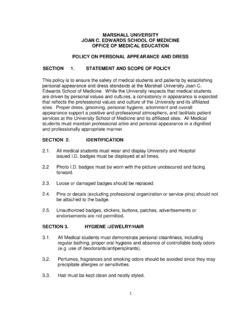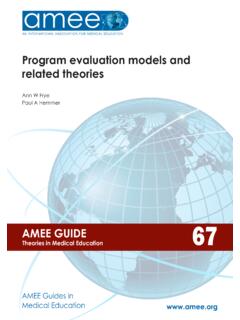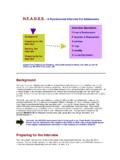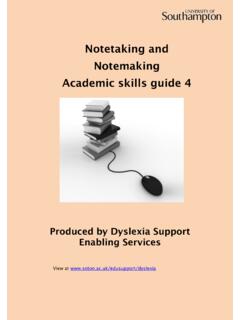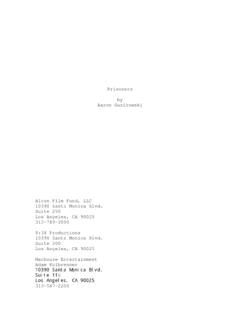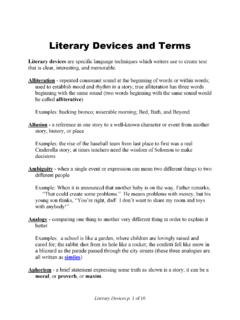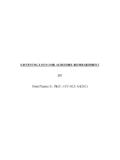Transcription of SUBJECT EXAMINATIONS Content Outlines and Sample Items
1 National Board of Medical Examinersof the United States of AmericaSUBJECT EXAMINATIONSC ontent Outlines and Sample ItemsMay 2008 TABLE OF CONTENTS Basic Science SUBJECT EXAMINATIONS Behavioral Sciences 1 Biochemistry 8 Gross Anatomy and Embryology 14 Histology and Cell Biology 20 Microbiology 26 Neuroscience 32 Pathology 38 Pharmacology 44 Physiology 50 Clinical Science SUBJECT EXAMINATIONS Clinical Neurology 56 Family Medicine 63 Medicine 70 Obstetrics & Gynecology 77 Pediatrics 83 Psychiatry 90 Surgery 97 Introduction to Clinical Diagnosis SUBJECT Examinations103 Comprehensive SUBJECT EXAMINATIONS Comprehensive Basic Science Examination 109 Comprehensive Clinical Science Examination 115 Copyright 2003, 2008 by the National Board of Medical Examiners (NBME ) BEHAVIORAL SCIENCES Progression through life cycle 1%B5% Psychological and social factors influencing patient behavior 5%B10% Patient interviewing, consultation, and interactions with the family 10%B15% Medical ethics, jurisprudence, and professional behavior 5%B10% Nutrition including vitamin deficiencies and eating disorders 1%B5% Central & peripheral nervous systems 50%B55% Normal processes (brain stem, brain, motor systems, autonomic nervous systems)
2 5%B10% Psychopathologic disorders 30%B40% Principles of therapy and pharmacodynamic general principles 5%B10% Gender, ethnic, and behavioral considerations affecting disease treatment and prevention (including psychosocial, cultural, occupational, and environmental) 5%B10% 1. A 50-year-old man develops difficulty walking while receiving drug therapy for paranoid behavior. Physical examination shows masked facies and diffuse muscle rigidity. He is slow in initiating movement and walks with a shuffling narrow-based gait. Which of the following drugs is the most likely cause of these findings? (A) Barbiturate (B) Benzodiazepine (C) Monoamine oxidase inhibitor (D) Phenothiazine (E) Tricyclic compound 2.
3 A 24-year-old man is brought to the emergency department by his mother after barricading himself in his apartment. For 8 months, he has believed that aliens follow him and control his mind. He was fired from his part-time job 6 months ago because of unusual behavior. There are no other apparent psychosocial stressors. His paternal grandmother has major depressive disorder. He does not use drugs, but his mother states that he frequently drinks beer. There is no disturbance of mood, sleep, or appetite. Examination shows an extremely agitated and suspicious patient. There is a 1 x 1-cm abrasion in the right frontal area. His blood alcohol concentration is mg/dL, and serum -glutamyltransferase (GGT) activity is 40 U/L (N=5 50). Which of the following is the most likely diagnosis? (A) Alcohol-induced mood disorder (B) Bipolar disorder, manic (C) Brief psychotic disorder (D) Schizoaffective disorder (E) Schizophrenia, paranoid type 3.
4 A 43-year-old woman is brought to the emergency department 1 hour after a stranger stole her purse. She is agitated and extremely upset. She is 163 cm (5 ft 4 in) tall and weighs 91 kg (200 lb); BMI is 34 kg/m2. Physical examination shows no other abnormalities. Her blood glucose concentration is increased. Which of the following is the most likely explanation for this finding? (A) -Cell hypersecretion (B) Cushing disease (C) Glucagon-secreting adenoma (D) Pancreatitis (E) Normal stress hormone response 4. A 4-year-old girl is brought to the physician by her mother because of a fever for 1 day. The physician is more than 1 hour behind schedule because of two patient emergencies earlier that day. When he enters the room, the mother yells, "Do you know how long we've had to wait? This is totally unacceptable!" It is most appropriate for the physician to initially state which of the following?
5 (A) "I am frustrated, too, with being so far behind schedule." (B) "I hope my staff explained about the difficult patients who caused the delay." (C) "It must have been very difficult to be here for so long with a sick child." (D) "My office staff scheduled too many patients for today." (E) "Unfortunately, some patients demand more time than we scheduled for them." Copyright 2003, 2008 by the National Board of Medical Examiners (NBME )-1- 5. A 45-year-old man is admitted to the hospital because of chest pain for 1 hour. He has a sedentary lifestyle, and his diet is high in fat and sodium. The diagnosis of acute angina is made, and the appropriate treatment is administered. After the patient's condition is stabilized, the physician recommends an exercise regimen and a low-fat, low-sodium diet.
6 Two weeks later, the patient returns for a follow-up examination. He indicates that he has not yet returned to work and spends most of the day lying on the couch. He has not had any chest pain, shortness of breath, dyspnea with exertion, or peripheral edema. Which of the following initial statements by the physician is most appropriate? (A) "Are you afraid you might have a heart attack if you exercise?" (B) "Are you doing any types of exercise other than channel surfing?" (C) "Have you also not been following the diet I recommended?" (D) "What do you think is interfering with your ability to resume activity?" (E) "When would you like to start working on improving your health?" 6. A firstborn 1-year-old girl is hospitalized for evaluation of arrested growth.
7 Pregnancy and delivery were uncomplicated, and development was normal initially. The infant is listless and has a diaper rash. She is below the 5th percentile for length and weight. No other abnormalities are noted. After 1 week of routine hospital care, the infant has gained 1 kg ( lb) and has become more responsive. Which of the following is the most likely explanation for the arrested growth? (A) Hypothyroidism (B) Infantile psoriasis (C) Milk allergy (D) Parental neglect (E) Pyloric stenosis 7. A 15-year-old boy with generalized tonic-clonic seizures is brought to the physician by his mother for a follow-up examination. She says he has not been taking his medication regularly. In his presence, she explains to the physician that she is baffled by her son's behavior and Acan't get him to take his pills, let alone take out the trash.
8 @ Even after his mother leaves, the patient stares out the window and refuses to talk. Which of the following behaviors during the interview is most appropriate to assess the patient's compliance with this regimen? (A) Confront the patient about his poor behavior (B) Explain the patient's resistance to him (C) Laugh and joke with the patient (D) Project a firm, businesslike manner (E) Project a respectful, tolerant attitude and encourage free discussion 8. The children of a 67-year-old woman ask their family physician for advice about their mother's behavior 4 weeks after the death of her husband of 40 years. They are concerned because she weeps whenever she comes upon an object in her home that she associates with him. Her appetite has decreased, and she has had a 2-kg ( ) weight loss. She awakens 1 hour before the alarm goes off each morning.
9 She is able to care for herself. Although she does not leave her home for any social activities, she does enjoy visits from her family. Which of the following is the most likely explanation and appropriate management? (A) Normal grief reaction, and she requires no medical attention (B) Normal grief reaction, and she would benefit from diazepam therapy (C) Pathologic grief reaction, and she should be treated with an antidepressant (D) Pathologic grief reaction, and she should be treated with psychotherapy (E) Pathologic grief reaction, and she should be encouraged to move in with one of her children 9. A 4-year-old girl is brought to the physician because she consistently uses her left hand. Her mother, who is also left-handed, tells the physician that she wants her daughter to be right-handed because she resents all the obstacles she faced as a left-handed child.
10 She makes her daughter practice with a crayon held only in her right hand. Which of the following responses by the physician is most appropriate? (A) "I know you want the best for your daughter, but pressing her to change is unlikely to work and might cause its own problems." (B) "I understand your concerns, and since she is only 4, your efforts will likely result in her being right-handed by age 7 years." (C) "Times have changed. There is much less discrimination against left-handed people now." (D) "You may be causing irreversible psychological trauma to your child, which could be worse than being left-handed." (E) "You shouldn't interfere with nature." Copyright 2003, 2008 by the National Board of Medical Examiners (NBME )-2- 10. A 65-year-old man comes to the physician for a follow-up examination after the results of a bronchoscopy showed squamous cell carcinoma.
